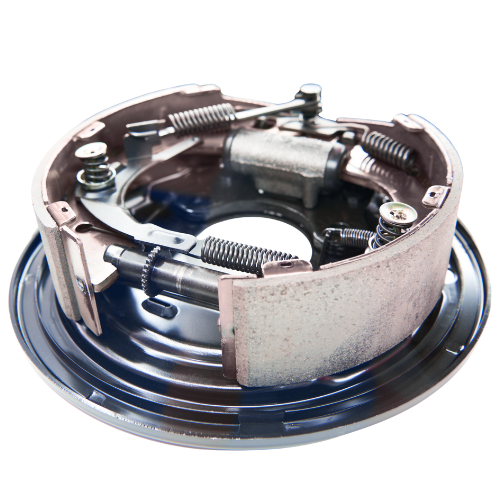Explore the four key components that make up a truck’s brake system—engineered to ensure safe, reliable, and powerful stopping performance on every road.

The global movement of goods, the backbone of modern commerce, relies heavily on the trucking and logistics sectors. However, maintaining efficiency and profitability in this industry requires a precise understanding of the substantial and fluctuating financial inputs. From initial regulatory hurdles and major equipment acquisition to ongoing operational and maintenance expenses, successful fleet management hinges on meticulous cost control. For fleet operators and original equipment manufacturers (OEMs), understanding the true cost of ownership is paramount, beginning with the critical investment in certified components like the slack adjuster.
Starting or expanding a commercial trucking operation requires significant upfront capital. These costs, which cover necessary legal and physical assets, establish the baseline financial pressure for any fleet, immediately impacting the long-term return on investment.
Regulatory and Licensing Costs
A primary hurdle involves securing the necessary permits and licenses for commercial operation. These fees vary significantly based on jurisdiction and the scope of operation.
Equipment Acquisition
The single largest initial expense is acquiring the vehicle fleet. The average price for a new commercial truck has recently reached approximately $193,043, reflecting persistent inflation and the cost of integrating advanced safety technology. This record-high capital outlay underscores the need for high-quality, durable components in the brake chamber and suspension systems to protect the asset's value. New trailer costs, averaging between $40,000 and $70,000, must also be factored into the overall capital expense. This foundational investment sets the stage for the continuous financial pressures of daily operation.
Once the initial fleet investment is made, a constant stream of marginal costs determines daily profitability. According to the latest analysis from the American Transportation Research Institute (ATRI), the average cost to operate a truck was $2.26 per mile. Critically, when fuel is excluded, non-fuel operating expenses rose to an industry record of $1.779 per mile.

Maintenance and repair (M&R) expenses directly influence a fleet’s profitability. While routine preventive maintenance is essential, the high cost of unexpected repairs severely impacts the bottom line. Investment in certified, reliable parts is the best defence against operational risk, ensuring fleet vehicles remain on the road and out of the service bay.
In logistics, the return on investment (ROI) is achieved by maximizing operational uptime and revenue per mile while strategically controlling costs. High operating costs have squeezed profitability; the latest ATRI report noted that the truckload sector had an average operating margin of -2.3%, underscoring the severe financial pressures in the freight sector. The key to mitigating this lies in component sourcing that directly supports uptime and risk reduction.
GAPASA is an IATF 16949-certified leader in manufacturing premium quality truck and trailer brake parts. The company's core mission is to directly address the critical financial pressures faced by fleet operators, namely the soaring costs of maintenance and repair, the financial drain of downtime, and the impact of safety risks on liability insurance. GAPASA achieves this by treating component reliability as the primary cost mitigation strategy.
Mitigating High Maintenance Costs
The quality of GAPASA components directly impacts the frequency of service intervals. For instance, manufacturing precise slack adjusters and highly durable S-camshafts that withstand environmental stress reduces the need for constant adjustment and premature replacement. By controlling the entire production process, from casting to final assembly, the company guarantees consistent material composition and performance across all brake shoes, brake calipers & kits, and brake chambers, effectively cutting down on the part failure rate that contributes to unpredictable M&R volatility.
Maximizing Uptime and ROI
Downtime is a direct erosion of the operating margin. A truck that is in the bay for unexpected brake chamber replacement is not generating revenue, which directly harms the ROI metrics noted by the ATRI. GAPASA's focus on OEM level specifications for critical items like air disc brake calipers and brake valves ensures that once a component is installed, it delivers an extended service life. This increased time on the road is the single most effective way GAPASA products help fleets improve their operating margins and maximize their return on investment.
Addressing Liability and Safety Costs
Rising insurance costs are intrinsically linked to safety performance. By supplying components that meet the highest international quality standards, GAPASA helps fleets maintain peak braking efficiency and road worthiness. Products like their advanced air dryers are crucial for maintaining the integrity of the entire pneumatic system, preventing failures that lead to accidents, regulatory citations, and subsequently, devastating insurance premium hikes. GAPASA offers a comprehensive product line engineered to protect assets and ensure regulatory compliance, including:
Managing a successful trucking or logistics operation requires a constant financial balancing act—between the significant cost of initial investment and the imperative to maximize operational efficiency. Key areas of financial pressure, including driver compensation, rising insurance premiums, and the critical costs of heavy duty brake calipers maintenance, must be managed with a focus on quality. By strategically choosing highly reliable, certified components from trusted truck brake calipers manufacturers like GAPASA, fleet operators can effectively mitigate risk, reduce unpredictable repair expenses, and ensure the consistent performance that drives sustainable profitability and high ROI.